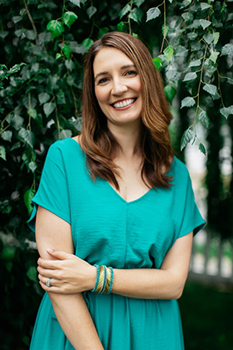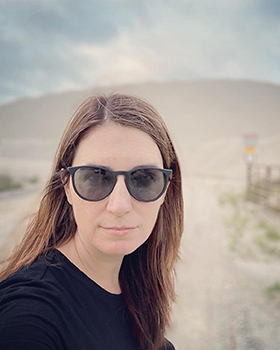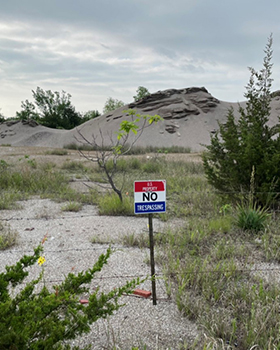

Features Vanessa Lillie
Listening to Bones, Inspiring a Hashtag, and Winning Texas Hold ’Em
The Big Thrill Interviews Vanessa Lillie
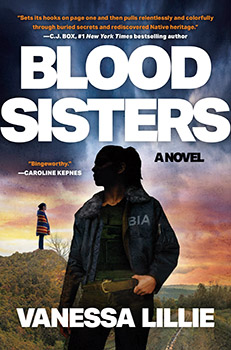 Known for her thrilling standalone novels, bestselling author and member of the Cherokee Nation, Vanessa Lillie, launches the first book in her exciting new Syd Walker series in November.
Known for her thrilling standalone novels, bestselling author and member of the Cherokee Nation, Vanessa Lillie, launches the first book in her exciting new Syd Walker series in November.
In BLOOD SISTERS, archaeologist Syd Walker’s happy life in Rhode Island is interrupted when human remains are discovered in her hometown of Picher, the place where, 15 years ago, a devastating incident changed the course of Syd’s life and that of her two best friends.
A female skull isn’t the only mystery Syd faces when she arrives in the small Northeastern Oklahoma town. No one has seen her troubled sister for over a week and, like so many missing Native women and girls, little is being done to locate her.
Unwilling to let Emma Lou become another tragic statistic, Syd’s determined to find her sister. No matter the cost. But her search for Sister and her Bureau of Indian Affairs (BIA) case collide to unravel a devil from her past and alter her future yet again.
Author Vanessa Lillie sat down with The Big Thrill to discuss her groundbreaking novel BLOOD SISTERS, her love of poker, and her passion for justice.
What was the inspiration behind BLOOD SISTERS? Why did you want to tell this story now?
I had been drawn to writing about being Cherokee for a while. However, doing so in my debut, Little Voices, which is about new motherhood, and my next book, For the Best, where I explored white female privilege, didn’t feel like the right place.
Also, I wanted to write about Oklahoma, where I’m from, and I’ve always had an interest in Picher. After the government and big mining companies stole the land from the Quapaw, they mined it until the lead and zinc industry went bust, leaving Picher a ghost town and with the label of “the most toxic town in America.”
There’s been more discussion and articulation of missing and murdered Indigenous women, so I’ve been following and understanding that topic. The heart of the book is around a real 1999 case that took place right after my senior year of high school. Two teenage girls went missing in a town near Picher. Their bodies have never been found and their families have never stopped looking. I’ve followed the case for years and read a great true crime book about it—Hell in the Heartland by Jax Miller.
Once I got to know Syd as a character, I felt she would be a good person to follow through a set of contemporary Native stories that would allow me to explore all of these elements in one place.
In your bio, you mention #MMIWG2S is at the heart of BLOOD SISTERS. Can you tell us what the hashtag stands for and how it plays into Syd’s story?
The hashtag for Missing and Murdered Indigenous Women, Girls, and Two-Spirit is a way of putting a language around injustice and shining a spotlight on the lack of institutional support and local police support, and disregard for the lives of Native women and girls.
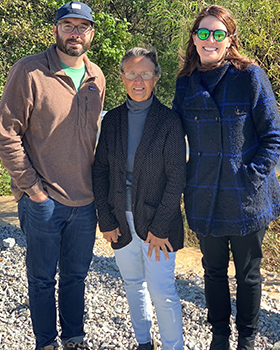
My brother, Nathan Lillie (Cherokee), who worked for BIA, Rebecca Jim (Cherokee), Founder & Executive Director of Local Environmental Action Demanded (LEAD), and myself on tour of Picher and Tar Creek Superfund site on Quapaw Tribal land.
The term Two-Spirit is putting a language around a rejection of a Western gendered approach, which, for many tribes, is not the tradition. Some of that was forced on us through Christianity and colonialism. Two-Spirit is this idea of a male spirit and female spirit, masculine and feminine even, that resides within people. Within the tribes, they were viewed with love and admiration, which is very different from how they’re viewed in many communities in this country.
My Syd Walker series will explore why we’re able to see these women and girls go missing, often for a long time, and how that ties back to our relationship with the land and the environment.
The opening epitaph of BLOOD SISTERS is—What happens to the land happens to the women.
In the back of the book, you have an Author’s Note. The first sentence reads, “There’s a lot of truth in this fiction.” How heartbreaking was it for you as an enrolled member of the Cherokee Nation of Oklahoma to learn about stories where the Bureau of Indian Affairs, a department of the US Interior, whose mission is to be an advocate for the various tribes throughout this nation, failed and even sometimes worked against the people they were sworn to protect?
From the earliest time I can remember, I knew that the reason my family was in Oklahoma was because the government took our home and made us go there. So, I wouldn’t say I ever had a real trust.
My dad served in Vietnam, and my grandfather served in World War II. So, it’s not that I didn’t appreciate service or things like that, but I never imagined the government would do anything other than what served the people in power.
Living near Pricher, I watched what capitalism did to a community and saw the complete environmental devastation and the sickness.
There are many good people and good things happening at BIA. My uncle worked his whole career at BIA and retired from there. My brother was at BIA for 13 years. But I never expected the history to be good. BIA was part of the Department of War, created to eradicate Native people.
I never had that feeling that BIA wanted to take care of us, so it wasn’t heartbreaking to learn of these stories because I didn’t expect anything different.
Syd loves her job as an archeologist with the BIA, but there’s real tension around it when she returns to Oklahoma. She expresses a feeling of “otherness.” She’s home with her family, but feels separated from it all. Do you know a “Syd” or did you pluck that dynamic from your imagination?
I’ve had that experience. I moved away from home for college when I was 18 and never moved back. I don’t have the same family tension as Syd, but I’ve imagined what my life would’ve been like if I had moved back. You miss things when you’re not part of a community anymore, when your family is far away. You create a geographic boundary, whether you meant to or not. I wanted to write about that in a more extreme way. Syd’s family is disappointed and doesn’t understand why she left. And Syd has a number of biases and doesn’t know what’s going on. Since I come from a small town, the otherness tone is easy for me to tap into.
The title BLOOD SISTERS plays into a great reveal toward the end of the story. Did you know the reveal going into the book? Or did that gem pop up later?
I knew it pretty early on. The title BLOOD SISTERS gets to something I believe—there’s blood family and then there’s the family you choose. I’ve been lucky to have people in my life who aren’t family, but feel like it.
The dynamic between Syd and her sister, Emma Lou, felt very real. Did you draw from a relationship in your life to give it that realism?
A few people in my life have struggled with addiction. For that piece, I wrote from a place of familiarity. I always wanted a sister, so I wrote Syd and Emma Lou’s relationship in a way that I always imagined what having a sister would be like. Plus, I drew from what I observed of my friends with their sisters. Because of Emma Lou’s addiction, Syd and her sister’s relationship took on a more parent-child dynamic, instead of a sibling dynamic.
Tell us something about yourself that readers would find fascinating.
Something I’ve been missing is poker. I won a Texas Hold ’Em tournament in St. Martin. There’s something about the rhythm of poker. The people watching, the chips, the whole thing—I love it.
Has ITW played an integral part in you becoming a published author or advancing your career? If so, in what way?
Absolutely, in advancing my career. I went to my first ThrillerFest in 2018. I had already sold my debut to Thomas and Mercer. ITW has great parties, and I got to meet my editor, the publicity people, and the marketing people. My publisher had an extra seat at their banquet table, so I got to sit with all those brilliant people. That was a huge help to connect with them early on. I’ve gone to every in-person ThrillerFest since then. I love that conference.
The community is wonderful. I love supporting other authors. I always learn so many things—it’s like getting an MFA. The new board is fantastic. The Big Thrill provides great information and publicity for authors. I learn about authors I didn’t know about. I’m very proud to be an ITW member—and it’s free to join!
What is the best writing advice you’ve ever received?
James Patterson said that he has days when he wakes up and hates everything he’s written. Then he has days he wakes up and loves everything he’s written. And he can hardly tell the difference between the work.
His advice is a good reminder that even if you don’t like what you’re writing, it’s worth it to push through. This business is all about resiliency. There’s some creativity and ability, but I think it’s a persistence game.
What can you tell us about the next Syd Walker book?
It’s drafted and needs a lot of work. No title or release date yet. It’ll be set in Rhode Island and there will be a connection to the Narragansett Tribe.
The Big Thrill Interviews Vanessa Lillie
- The Big Thrill Recommends: DISCONNECT by Traci Hunter Abramson - June 27, 2024
- Tom Straw (Video) - May 10, 2024
- The Big Thrill Recommends: THE LAST TIME SHE SAW HIM by Kate White - May 10, 2024

